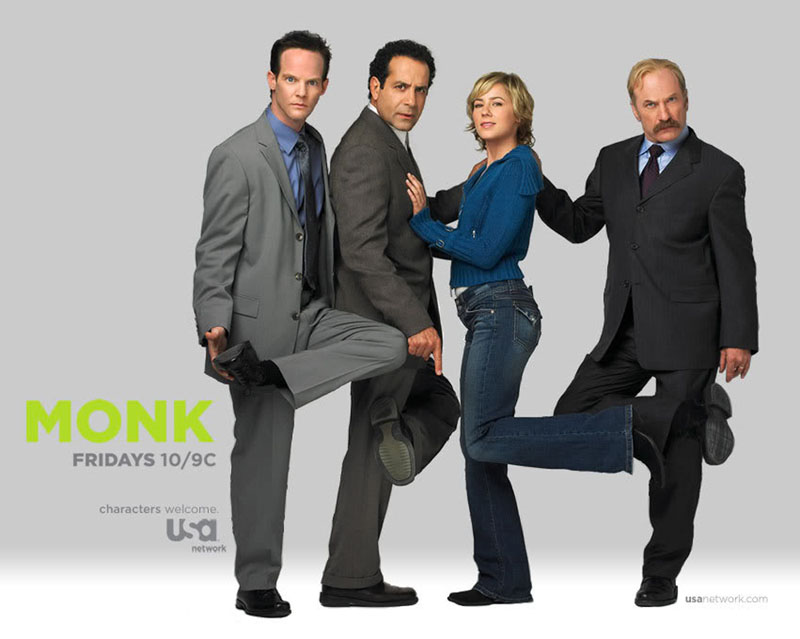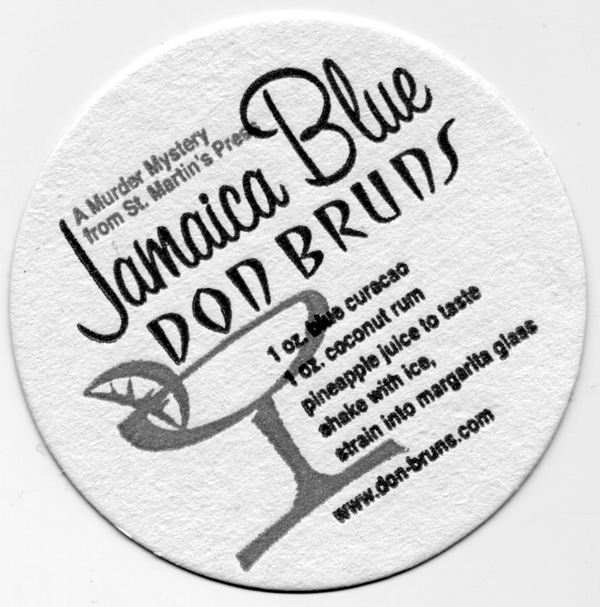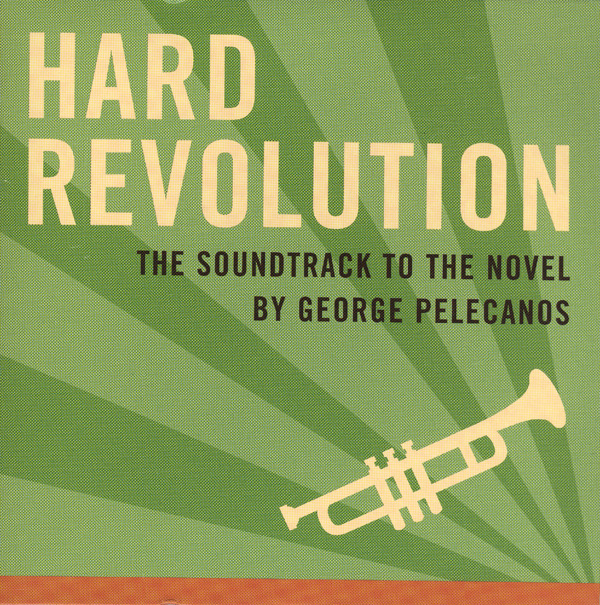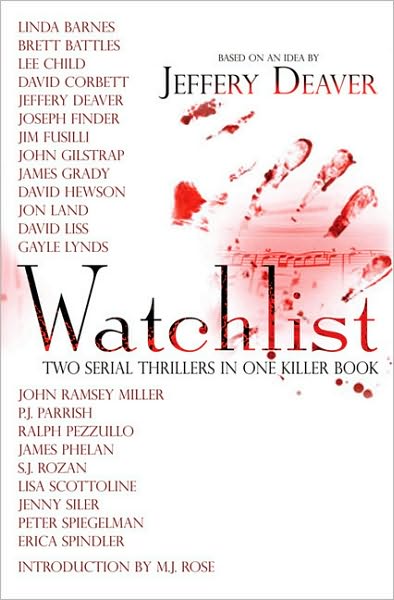
Cold pizza, John Walsh, and bad guys: An insider's glimpse behind the scenes of America's longest-running true crime show.
The bright lights overhead were on at full blast. The huge insignia I’d seen on TV hung on the wall behind me. Three television cameras were positioned at various angles throughout the cavernous studio. I stood in the middle of the soundstage, holding a telephone to my ear, pretending to be one of the hotline operators on America’s Most Wanted.
It was my first week as an intern for Manhunter, an international spinoff of America's Most Wanted, and I'd been invited down to the set to participate in the production of a promotional video for Fox. Since this would never air, staff members were being used as extras. I was thrilled. After spending the last year in graduate school classrooms discussing postmodern theory in the sitcom, I was on a real TV set. And this wasn't just any set—it was the home of the legendary America's Most Wanted, hosted by crimefighter John Walsh. Walsh is a tireless advocate for victim’s rights whose activist career began in tragedy. In the summer of 1981, John and Reve Walsh's six-year-old son, Adam, was abducted and later found murdered.
The Walshes turned their grief into advocacy for missing and exploited children—and in 1988, John turned from helping to pass legislation for missing kids to literally helping to find them, with Fox's America's Most Wanted.
From the start, the show worked with local and national law enforcement to serve up information about violent criminals—in the process, turning the American public into a giant crimefighting task force. This was serious business, and John Walsh was obviously a serious guy.
When he came out onto the set that first day, I was uneasy. In addition to our shared name, I was about the age that Adam would have been had he lived. Would our meeting cause him pain? He looked around, nodded at the people he knew and shook hands with some of them. He even smiled. I had spent the last week watching countless episodes of his show, and while he had displayed many expressions—angry, vengeful, and even sympathetic—cheerful hadn’t seemed to be in his repertoire. Then he made his way to me. “We haven’t met,” he said, putting out his hand.
I tried to speak, but my voice was about as accessible as a maximum security prison.
“This is Adam,” someone said on my behalf. “He’s one of the new interns.” “Welcome aboard,” he said, and there it was—twice in ten minutes—a smile. Then he turned to someone behind the camera. “Now are we ready to do this shot or what?”
That was the beginning of my career at America’s Most Wanted, the only major TV program produced in Washington, DC where the staff doesn’t care who’s in the White House. Within a matter of months, I graduated from being an intern to a production assistant to a writer. I was thrilled. But although my job was technically to write, I spent a lot of time taking notes on what other people wanted me to write. My work week began every Monday morning with the show meeting. About ten producers gathered in the conference room with copies of the rundown for the episode that would tape that Friday. As we looked at the rundown, someone passed out donuts. The amount of looking generally corresponded to how many donuts there were.
Finally someone said, “We started last week’s show with a cannibal who ate his own mother, it’s going to feel repetitive if we open this week with John Bruce Dahmer.”
Every fugitive was called by his full name. Mention Ted Bundy around the office and you’d get a blank stare, but talk about “Theodore Robert Bundy” and you could have a file the size of a phone book within seconds.
“But,” another producer chimed in, “it’s our best story. And last week’s cannibal ate his sister, not his mother. This is completely different.”
After about a half hour of hashing that around, we moved onto acts two and three. Now we were rolling. But by the time we got to act four, there was a problem.
“We’ve got too many Latinos at the front of the show. Maybe we could space them out?”
So we swapped out the Asian bank robber in act five for one of the Latino ax murderers in act two, but then the executive producer wondered if we should move in the Caucasian child molester from next week’s show. When this process was complete, the show was “locked,” which meant it was about as solid as a sand castle in high tide.
 Then I went off to write the witty introductions that John Walsh tossed off at the beginning and end of each individual segment. I soon discovered that the process was like mad libs, with a typical introduction running along the lines of: “[name of crime] is a terrible tragedy. But even more terrible is the grief that has to be faced by [name of victim].” The tags were usually even simpler: “I need your help to catch this [name of reptile]. So please, if you’ve seen him, call our hotline at 1-800-CRIME-TV.”
Then I went off to write the witty introductions that John Walsh tossed off at the beginning and end of each individual segment. I soon discovered that the process was like mad libs, with a typical introduction running along the lines of: “[name of crime] is a terrible tragedy. But even more terrible is the grief that has to be faced by [name of victim].” The tags were usually even simpler: “I need your help to catch this [name of reptile]. So please, if you’ve seen him, call our hotline at 1-800-CRIME-TV.”
After that I spent a couple of days writing and then I gave my script to the supervising producer, who offered a few helpful suggestions. Then we had a meeting with the co-executive producer, who hated everything I really liked and liked everything I really hated and sent me off with a batch of new ideas.
On Wednesday, we sat down for our first table reading. This involved the same ten producers who had been there at the show meeting on Monday, only this time there were no donuts and that seemed to dampen the mood. We started reading the script aloud, until someone said, “Should it be ‘I hope someone brings this snake to justice’ or ‘I want to bring this snake to justice?’”
“The second one’s more active,” the executive producer said. “I like it when John’s active.” Another producer disagreed. “It sounds too aggressive, it makes him sound like a vigilante.” We went back and forth on that for a while, and as usual the producer with a longer title won. But it was only the beginning of much haggling over each individual line. The script was changed and changed and changed again, until finally it was Friday: taping day. My job was to sit in the control room just off the set, which had more TV monitors than NASA. There was also a full crew of people to watch those monitors: a director, a technical director, an assistant director, and a director’s assistant. While the various directors directed, I listened as we taped the show to make sure that John read every word in the script exactly as it had been written.
There was always a lot of waiting, until I heard someone radio from the set, “John’s ready,” and then the flurry of activity began.
“Get me X up on the screen.”
“X is up.”
“We’re rolling on X.”
“Rolling on X.”
“And action.”
And there went John Walsh, mouthing the words we had agonized over all week. The show introduction went flawlessly, but we did it four more times just to be sure. Then there was some trouble doing the tag on the first segment. The first time he did it, the camera was out of focus. The second, he stumbled over a word. Take three, and there was a technical glitch. Then, finally, he was going great until I heard“...and I want to bring this lowlife to justice.”
“It’s perfect,” the director said. “On to the next setup.”
But my heart was pounding. Lowlife, I thought. He said lowlife. The script read “snake.” We’d argued about that line for six and a half hours, and John had negated all that effort with one wrong word. I could just let it go, but there was the chance that my boss would see the show on Saturday night and scream, “That’s not what was in the script!” So I had to alert all the directors in this room and all the people on the set that John Walsh had made a mistake, and he would have to do it over again, all because of me.
“Um,” I said, clearing my throat.
The director’s head spun around like the little girl’s in The Exorcist. “Yes?”
“John strayed a little teeny bit from the c-c-copy,” I stammered.
“He should’ve said snake.”
“He didn’t say snake?”
“He said lowlife.”
“Snake. Is that what it says in the teleprompter?” the director asked.
The teleprompter girl quickly scanned her copy. My heart was going faster than an escaped con over a prison wall. “Yes,” she said.
The director nodded. “Okay, let’s go again.”
On about 15 screens, I saw John glaring the way he did when we had a story about a child killer, and through the microphone, I heard him mutter, “Snake, lowlife, what the heck’s the difference?”
I was with John on that one. But if he’d been in the show meeting, maybe he would’ve understood.
Most weeks were a lot like that. I went to meetings, I wrote, I monitored John Walsh’s lines. Then, finally, after weeks of writing “If you’ve seen this lizard, call our hotline at 1-800-CRIME-TV,” I had a chance to work the hotline itself, taking calls from real tipsters around the country.
On TV, what you see is a lot of good-looking people in suits in the background behind John fielding calls, but those are the actors. The real work is done in the conference room 24 hours after the taping, when the show airs, by a lot of normal-looking people in sweat pants eating cold pizza.
There was a TV at the end of the conference room and a phone at each chair. I looked at mine, daring it to ring, and sure enough when the first segment—about a Vietnamese mobster—faded to commercial, the ringing began. Heart in my mouth, I picked it up. “America’s Most Wanted,” I said.
“Yeah, I can’t figure out what to do after I click on start.”
“Excuse me?”
“Is this tech support?”
“It’s America’s Most Wanted,” I said.
“Oh, sorry. Wrong number.”
I’d barely hung up the phone when it rang again.
“I’ve seen him,” the woman said before I could even say hello. “That Asian guy.”
“Really?” I grabbed a pencil and a tip sheet and asked, “Where?”
“He was my waiter. At this Chinese restaurant.”
I scribbled furiously, sure that we were only moments from catching this vicious killer. But when I handed the tip sheet over to the detective handling the case, he raised an eyebrow at me.
“Another restaurant, huh?” he said.
Over the next two hours I received more tips on John Pho, all of which claimed he was a waiter at Chinese and Thai restaurants ranging from Billings, Montana to Miami, Florida. A few other people thought they had seen him in Wal-Mart and one was sure he was her next door neighbor.
We never caught the Vietnamese gangster, but we did make plenty of other captures. Whenever the news came into the office, word would spread from desk to desk like a tidal wave. As soon as the chatter reached my boss, he would march into the conference room and write the fugitive’s name on the wall in magic marker. Everyone would gather around, watching in awe, and feel a sense of pride at a job well done. Sometimes I wondered what would happen when it was time to repaint the conference room, but I never asked.
Finally, after two years at America’s Most Wanted, I wanted to test my skills as a television writer by moving to Los Angeles. But it was a bittersweet departure.
When the taping was over that Friday, I saw John Walsh standing outside his dressing room. “I heard you’re leaving us, Adam,” he said, and I admitted that I was. “Watch out for yourself in L.A. It’s a dangerous place.” I didn’t know if he wanted me to be careful of the assorted snakes, lizards, and other reptiles who slithered along the mean streets of the city, or of the people I’d meet in the television industry. I looked at him, hoping he would elaborate, but he just smiled.
Adam Meyer is a television writer, screenwriter, novelist, teacher, and against his better judgement, commercial actor.



 About Diesel…The Stephanie Plum series occasionally has otherworldly elements—the character of Ranger is certainly out of the ordinary—but the new book steps more explicitly into the fantastic, the fabulous, perhaps even the world of the comic book with Diesel and with Sandy Claws and his elves and with a villain who siphons electricity to blast at the good guys. What sent your writing in this direction? And how do you think readers will react?
About Diesel…The Stephanie Plum series occasionally has otherworldly elements—the character of Ranger is certainly out of the ordinary—but the new book steps more explicitly into the fantastic, the fabulous, perhaps even the world of the comic book with Diesel and with Sandy Claws and his elves and with a villain who siphons electricity to blast at the good guys. What sent your writing in this direction? And how do you think readers will react?  In a Q&A section of your website, you advise first-time authors to “Write for the reader.” And you are very clear about the relationship you want to cultivate between yourself and your reader. You started out as a romance writer. How did those early experiences impact your approach to your readers, to your writing and to your career?
In a Q&A section of your website, you advise first-time authors to “Write for the reader.” And you are very clear about the relationship you want to cultivate between yourself and your reader. You started out as a romance writer. How did those early experiences impact your approach to your readers, to your writing and to your career?  And that’s why you and your daughter host the monthly games on the website, provide the chance for people to ask you questions on email? Why you have your mailing address printed right inside the dustjacket of your books?
And that’s why you and your daughter host the monthly games on the website, provide the chance for people to ask you questions on email? Why you have your mailing address printed right inside the dustjacket of your books? Riding the wave, watching the trends…. Perhaps you don’t want to write just for yourself, closing yourself off from your audience, but isn’t there a balance between that extreme and simply responding to what the market demands?
Riding the wave, watching the trends…. Perhaps you don’t want to write just for yourself, closing yourself off from your audience, but isn’t there a balance between that extreme and simply responding to what the market demands? 

 Then I went off to write the witty introductions that John Walsh tossed off at the beginning and end of each individual segment. I soon discovered that the process was like mad libs, with a typical introduction running along the lines of: “[name of crime] is a terrible tragedy. But even more terrible is the grief that has to be faced by [name of victim].” The tags were usually even simpler: “I need your help to catch this [name of reptile]. So please, if you’ve seen him, call our hotline at 1-800-CRIME-TV.”
Then I went off to write the witty introductions that John Walsh tossed off at the beginning and end of each individual segment. I soon discovered that the process was like mad libs, with a typical introduction running along the lines of: “[name of crime] is a terrible tragedy. But even more terrible is the grief that has to be faced by [name of victim].” The tags were usually even simpler: “I need your help to catch this [name of reptile]. So please, if you’ve seen him, call our hotline at 1-800-CRIME-TV.” Cold pizza, John Walsh, and bad guys: An insider's glimpse behind the scenes of America's longest-running true crime show.
Cold pizza, John Walsh, and bad guys: An insider's glimpse behind the scenes of America's longest-running true crime show.
 In case you think that discrimination in the crime writing world is a thing of the past, here’s an incident recounted by the Scottish writer Val McDermid. It appeared in The Scotsman, August 15, 2007:
In case you think that discrimination in the crime writing world is a thing of the past, here’s an incident recounted by the Scottish writer Val McDermid. It appeared in The Scotsman, August 15, 2007:
 Marine biologist with a temper Doc Ford is back in Randy Wayne White's latest. See also Mystery Scene's cover feature with White in the print issue of
Marine biologist with a temper Doc Ford is back in Randy Wayne White's latest. See also Mystery Scene's cover feature with White in the print issue of 



 Learn how collecting specialty and companion items to your favorite books can be both fun and valuable.
Learn how collecting specialty and companion items to your favorite books can be both fun and valuable.






